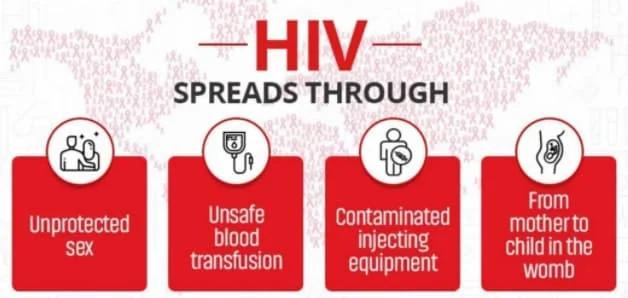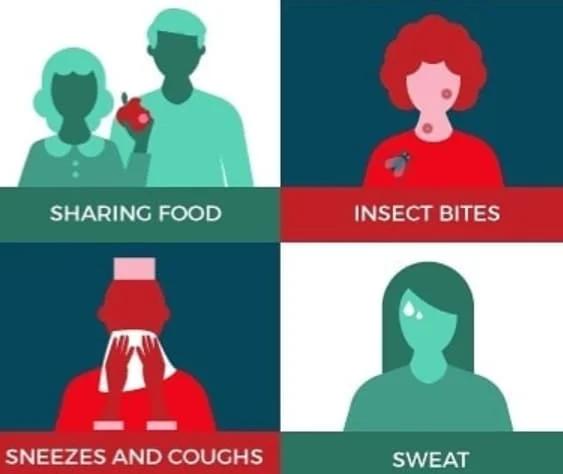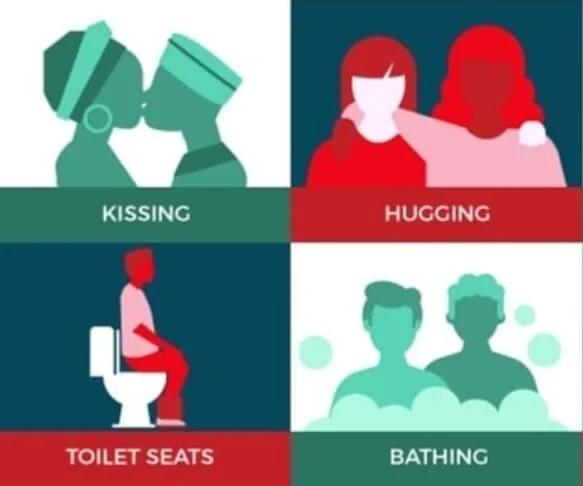HIV Transmission
❍ Transmission of HIV virus occurs through contact between two fluids, one of which contains the virus, but not all fluids in the human body have the same power of transmission:
- Blood, semen, seminal fluid (transparent fluid that flows at the onset of an erection), vaginal fluids, rectal fluid, and breast milk can transmit HIV
- The virus is too low in saliva, sweat, tears, vomit or urine to be transmitted.
✋ There are 3 main ways of transmitting HIV
1-Sexual transmission
- Either partner can get HIV through sex.
- Vaginal sex is less risky for HIV than receptive anal sex.
- HIV can enter a woman's body during vaginal sex through the mucous membranes that line the vagina and cervix.
- Men get HIV through the opening at the end of the penis (or urethra), the foreskin if the penis is not circumcised, or small cuts, scrapes, or open sores anywhere on the penis .
2-Transmission by direct contact with blood:
- When sharing syringes and / or other equipment (cotton, spoon, tourniquet, water, etc.) between intravenous drug users.
- In an accidental wound caused by a bite or a cut caused by infected material, mainly in healthcare workers (low risk).
- Transfusion of blood from a person infected with HIV. This situation has disappeared in our countries.
3- Transmission during pregnancy, childbirth or breastfeeding
- There is a risk of infection from the HIV-positive mother to her child during pregnancy (contamination through the blood), childbirth (through the blood and through vaginal secretions) and breastfeeding (through breast milk)
- Recommendations to test all pregnant women for HIV and start HIV treatment immediately reduced the number of babies born with HIV.

✋ HIV is not transmitted
- The virus is not transmitted by tears, sweat, saliva, coughs and sneezes, by insect bites (the HIV virus does not survive in the salivary glands of the mosquito), or by shaking hands, kissing, massage, or masturbation.
- There is no risk when sleeping in the same bed, sharing clothes, drinking from the same glass or eating from the same dish, nor when swimming, or by contact with the toilet seat.


Fig : HIV is not transmitted(@Avert.org)